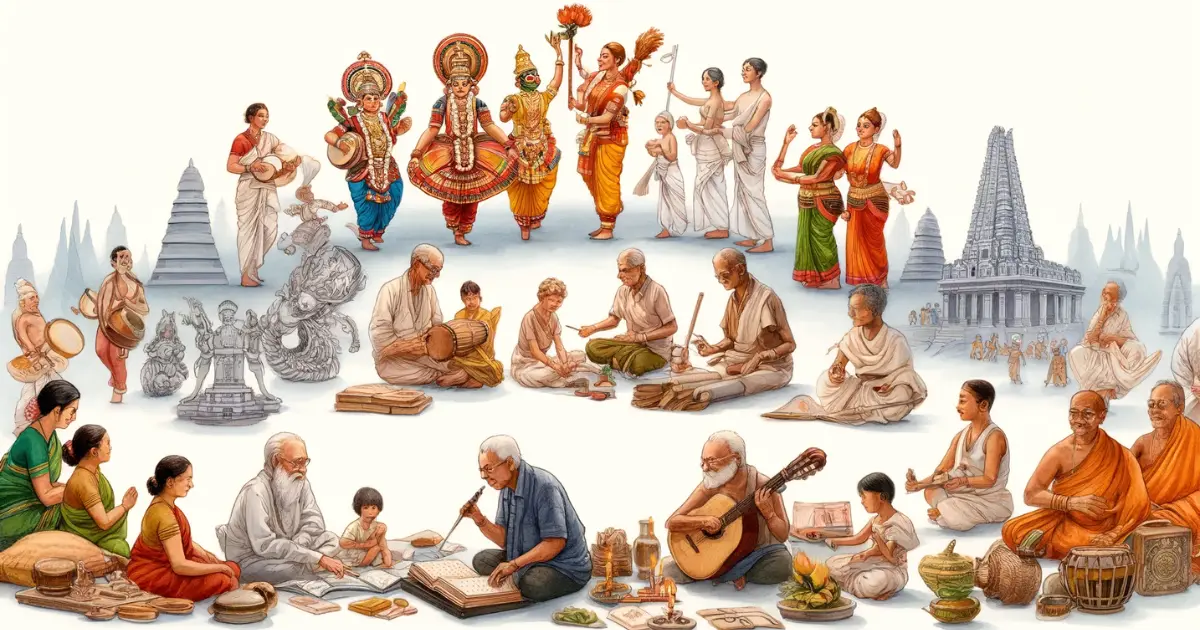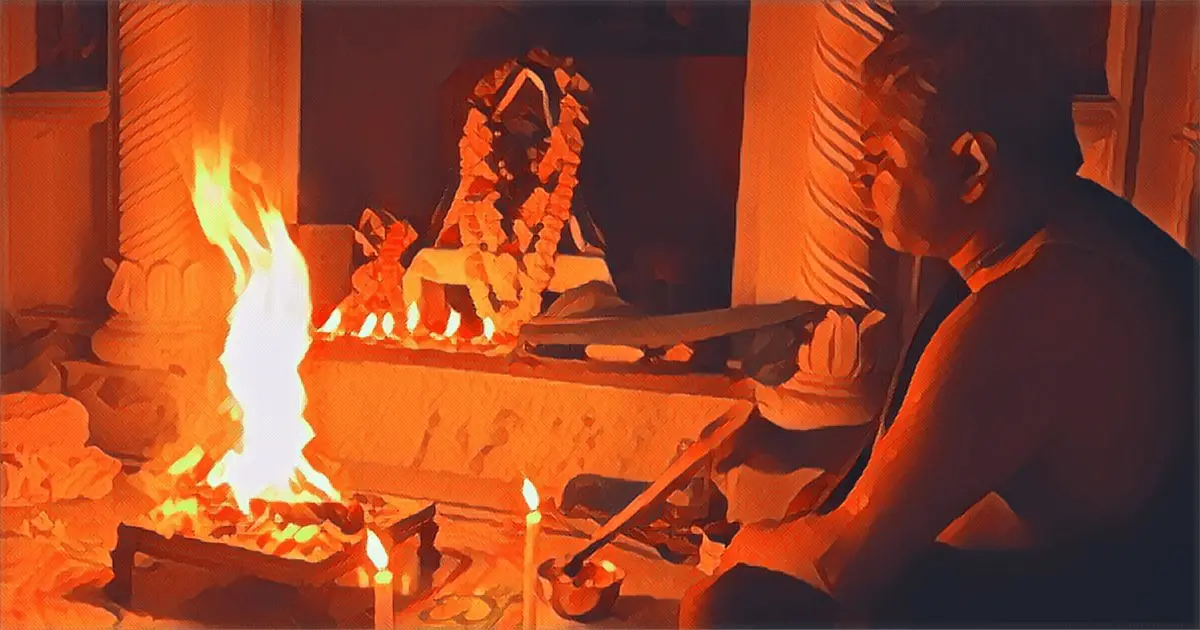This article is the third and final part of a series on the Codification of Law in India. Read Part 1 of the series, which explores the history, motivations and the method of the colonial-imperial project of the codification of law, here. Part 2, which can be found here, recounts the structure and functioning of the pre-colonial Dharmaśāstra tradition as a prelude to the present discussion on the codification and secularisation of religious law. Both these parts provide additional background and context to the forthcoming discussion. In totality, the three articles on the subject aim to form a significantly detailed overview of the complex superstructure of the Hindu legal system and the changes it underwent in response to interaction with the colonial administration. The series hopes to discredit the modernist assumption that a ‘religious’ legal construct such as dharma is no longer relevant due to the domination and superiority of the notion of Western “secular” law.
To this end, the present article explores the creation of the artificial distinction of “secular” and “religious” within law and the traces influence of Protestant Christianity on the manner in which the formulation of what is now called “Hindu law” or Hindu personal law was carried out by the British in India. In so doing, it digs deep into the ideological underpinnings of secularisation of law, and its roots in Christian theology to examine in greater detail, the colonial distortion and erasure of Hindu law.
In antiquity, any system of law has always been based in religion, the two being inextricably entwined. The British misconception of Dharma as ‘religious law’ has its origins in the Christian identification and rejection of specific Jewish laws as ritual/”ceremonial”, a construct also extended to Catholicism during the Reformation. The dichotomy is responsible for creating the modern distinction between the “secular” and the “religious”. The artificial differentiation of positive law and religious or moral obligation is irrelevant to the traditional worldview, which is only concerned with the ṛta/dharma complex.. As Yelle writes in his chapter Moses’ Veil: Secularization as Christian Myth,
the reciprocal definition of law and religion in a political theology or spiritual economy: just as religion became “spiritual,” individual, and/or private, law became “secular,” positive, and public. As the one advanced, the other withdrew. The separation between the religious and the secular was a division internal to religion—it carved up a single theological space—in which “law” and “religion” were originally not distinct. From this perspective, secularization—meaning the transcendence by religion of all positivity, especially that of ritual—represented the consummation of an eschatological process, the guarantee of Christian redemption. “Freedom of religion” meant originally “freedom from (Jewish) ritual.”
Therefore, the notion that law is necessarily ‘secular’ and therefore non-religious or religiously neutral in character, is erroneous. Secular law, despite its name, in fact embodies a particular theology inherited mainly from Protestant Christianity — advanced by enlightenment thinkers as an aspect of rational thinking — through which it asserts a certain superiority over other traditions that identify themselves as religious. Yelle further contends that challenging this apparent universality of secularism, whose true origins lie in anti-Judaism, is integral to understanding European modernity. Yelle summarizes centuries of developments in the shaping of the construct of secular law: “Secularism invoked and inverted the religious distinction between canon and idolatry, true religion and false, the Sacred and the Profane, so as to exclude the forms of traditional religion, and secure the foundations of modernity as distinct from an irrational, religious past.”
On the development of secular law by its dissociation from religious law, the influence of Christian soteriology and supersessionism is readily felt, stemming from the hierarchical opposition between European secularism and Oriental religion, which in turn has parallels to that between Christianity and Judaism and Christianity and Islam. Robert Yelle writes:
In the process of defining other cultural traditions as religious, European civilization has “judged itself no longer Christian, no longer religious . . . [and] named itself, . . . reincarnated itself as secular.” Through such a stratagem, Christianity has apparently (but only apparently) “transcended” religion, by becoming free from the contingencies of historical tradition, and potentially universal, as is supposedly the distinction between the religious and the secular itself. This device served the interests of European rule over other cultures. By defining the terms of the discourse in such a way as to make the question of the origins and limits of the secular unthinkable, Christian colonialism rendered its own, ostensibly secular form immune to the objectifying and transformative power it directed against other traditions and, by the same token, made itself invisible, and therefore potentially invulnerable.
The colonial project of the codification of law involved the organization and reduction of a body of dharmaśāstra to standardized, printed texts, through the subversion of traditional institutions and the repudiation of customary and oral traditions. The process was carried out through the Protestant privileging of texts, especially literal interpretation — derived from the Protestant doctrine of sola scriptura —that scripture alone is the sole source of religious authority. Literalism was also facilitated through the objectification of text that was the result of the increased availability of the printed book and the simultaneous subsidence of oral culture and growth of literacy.
The solidity of text lent an appearance of immutability to its meaning and authority. Yelle explains the manner in which Protestant literalism constituted an attempt to fix both the meaning of language, and its connection to the world. In colonial India, “the British attempt to reorder language aimed at a realignment of the relationship of the speaking (and listening) subject both to physical reality, and to the divine simultaneously. The disenchantment of language also worked to disenchant the material world, beginning with the idols or statues of the divinities in which their spirits were localized. There was a fundamental, iconoclastic logic underlying British polemics against Hindu image-worship, repetitive prayers, and the belief in the magical power of words.” Protestant iconoclasm, therefore, inspired attacks on oral custom, myth, and poetic ritual language, contributing to the opening of secular modernity as a space opposed to traditional religious forms. The genealogy of Orientalism is inextricably tied to that of secularism, which preserved crucial structural elements of the Christian attitude toward Judaism and paganism and transferred these to the colonial encounter with the “other” — British Protestants compared Hindus to both Jews and pagans based on resemblances in ritual . The colonial administration also applied to Hindu law the same categories they applied to Mosaic law; and used distinctions derived from Christian theology to forcibly disestablish the ritual elements of Hindu law. The rationalization and selective codification of dharmaśāstra aimed to disenchant or secularize Hindu tradition, reflect presuppositions and tendencies found in Protestantism, and especially Puritanism.
“Secular” is often used to denote the nonreligious sphere, while “secularization” is the process of separating the various domains of culture from religion. In the words of Yelle, secularization of law generally entails “the demarcation of a regime of positive law free from the control of or admixture with religion”. Secularization almost always results in the decline of religion due to the progressive encroachment of the nonreligious realm on the traditional institutions, domains, and prerogatives of religion. Yelle states that “Secularism invoked and inverted the religious distinction between canon and idolatry, true religion and false, the Sacred and the Profane, so as to exclude the forms of traditional religion, and secure the foundations of modernity as distinct from an irrational, religious past.” Secularization in the context of colonial India meant not merely a seperation of law and religion, but the creation of a new spiritual economy in which there was little room for ritual. As established earlier, colonial secularism patterned itself on Christian anti-Judaism, involving the replacement of one soteriology and mode of social organization by another that was more conducive to colonial exploitation.
Robert Yelle in The Language of Disenchantment: Protestant Literalism and Colonial Discourse in British India describes the British interaction with the Dharmaśāstras and the process of its secularization to create a body of universally applicable civil laws. The colonial officers viewed the Dharmaśāstras as they did Canon law — as a mere source of laws for inheritance, succession, marriage and contracts, that were reserved for “private” matters — however, the texts also embody a cosmology, an ethic, and a ritual code. Yelle observes that “To the British, such provisions were extraneous to a system of positive, secular law, and reflected a primitive stage at which law had not yet become distinct from religion. Far from religiously neutral, such attitudes toward Hinduism expressed theological presuppositions concerning the separation of religion from law, and of both of these categories from ritual.” The British, given their Protestant leanings and background, applied the understanding of religion most familiar to them, based on Protestant thought. Most of dharma was labeled ‘ritual’, and ritual was not intended to be enforced as law but rather, marginalized, seen as unnecessary and even as a sign of backwardness and superstitious idolatry. Yelle remarks in Moses’ Veil: Secularization as a Christian Myth that moreover, by defining religion as a matter of internal conscience rather than of external practice, “[m]odes of life based upon the primacy of communal ritual have been ghettoized, rhetorically and socially devalued, and, in some cases, eliminated altogether”. The British Protestants instituted a series of attacks on Hindu beliefs, practices, institutions, and worldview, condemning Hindu mythology, rituals, languages, and law, either through “reform” or by outlawing or marginalizing or converting them into more “rational” and “utilitarian” forms. Therefore, the two aspects of secularization of law and religion were both the repudiation of ritual and the thrusting of religion into the private sphere from the public and communal. The restriction of religion to the individual or family level created a public space that could be occupied by the “secular”. Yelle states that this phenomenon was accompanied by the rejection or repudiation of tradition in terms of performance, or orthopraxy, based on a myopic understanding derived from Protestant Christianity. In Yelle’s words, “The Christian condemnation of Jewish ritual law as empty ceremonial replaced by the spiritual religion of the Gospel informed colonial comparisons between Hindus and Jews, as well as the forcible secularization of Hindu law and the disestablishment of its ritual dimensions”. Therefore, colonial projects for the reform of Hindu law embodied Protestant thinking: the evolution of religion and law were framed such that ritual praxes were condescended and abandoned, an attitude that continues even today in the formulation of law and policy.
The treatment of śāstras and the codification of Indian traditions by the British was also, at the same time, a standardization of their languages and religions, under a new master idiom in which both the English language and English ideas of language were dominant. This dominance continues to the present day, wherein discourse, framing and writing of law takes place in English, while translations are scant or not readily made available for the populace. Thus, the construction of a ‘Hindu law’ based on mistaken or fabricated perceptions began, which carried neither the characteristics of śāstra nor that of prevalent custom. To exemplify the process, nature and effect of codification of dharmaśāstra, the compilation works of Hastings and Jones, the Vivadārṇavasetu and the Vivādabhangārṇava, are discussed below.
Nandini Bhattacharya-Panda discusses the first digest of ‘Hindu law’, commissioned by Hastings: the Vivadārṇaavasetu, and its English rendering, The Code of Gentoo Laws or Ordinations of the Pundits by Nathaniel Brassey Halhed and the manner in which the text reflected the ideology, interests, and inhibitions of the British officials. She remarks on the deviation of codified law from the Dharmaśāstra tradition, and the resultant colonial construction of in the name of śāstric tradition — that is, the colonial government’s attempt to codify and translate certain subjects of ‘law’, that would be compatible with the interests of the East India Company while also appearing to be adherent to traditional law of the Hindus. The project was sponsored by the Company’s Government in Bengal and undertaken through the personal initiative of Hastings, who hired Sanskrit scholars to undertake the task. Legal codes were compiled by selectively taking material from the Dharmaśāstras and other smṛtis, while accommodating the preferences of Hastings. JDM Derrett observed that the text lacked logic and completeness, and that the ‘order of appearance of the chapters, and the relative weight given to each does not correspond with anything known to the usual śāstric works, and it is evident that the committee was working on a list of topics supplied by Hastings or his immediate advisors’. The Code of Gentoo Laws, as the first English translation of the first compilation of ‘Hindu law’, received a great deal of attention from both British administrators, being accessible British administrators in Bengal in particular (to whom it was projected as the official handbook on Hindu law), and to the European public in general. The text was an outcome of Hastings’ concern to ensure a flourishing trade and a steady flow of revenue in Bengal, while also providing reassurance to the indigenous population about the good intentions of the newly established government. As stated by Nandini Bhattacharya-Panda, “[t]o ensure that the compilation be ‘authentic’— or at least appear to be so — he invited 11 pundits from different parts of Bengal to compile the text in Sanskrit. The text was compiled with the help of these Sanskrit puṇḍits who also assisted Halhed in the English translation, mediated through a Persian abstract of the Sanskrit text since neither knew the other language. Halhed then used his knowledge of Persian to construct the English. The puṇḍits would not have checked the Persian abstract or the English Code.
Following this, Jones, a philologist and Calcutta judge who had a deep distrust of native scholars, sought to compile another code of Hindu law to “accommodate it justly to the improvements of a commercial age’, clearly incorporating the interests of the Company. Jones explained why he thought it necessary to improve and update the Hindu legal system, which he saw as ‘a system of despotism and priestcraft, both indeed limited by law, but artfully conspiring to give mutual support, though with mutual checks’. He referred to its strange conceits in metaphysics and natural philosophy, its idle superstitions and obscurely figurative scheme of theology. Nandini Bhattacharya-Panda writes that Jones “proposed ‘a complete Digest of Hindoo and Mahomedan laws, after the model of Justinian’s inestimable Pandects, compiled by the most learned of the Native Lawyers with an accurate verbal translation of it into English’. The copies of the work would be deposited in the proper offices of the Sadar Diwani Adalat and the Supreme Court to be consulted occasionally as the standard of justice. The officials administering justice would thus have easy access to the principles and titles of law applicable to the cases before them. Then the pundits or maulvis would not dare to lead them astray ‘when their imposition might easily be detected.” Jones’ project, called the Vivādabhangārṇava, A Digest of Hindoo Laws —meant to forever end the brahmins’ monopoly of scriptural knowledge and to be independent of their influence. The compilation and translation of the Vivādabhangārṇava was personally supervised by Jones, who prescribed the arrangement, and selected and classified the material to be drawn from.
Prior to the compilation of the Vivādabhangārṇava, Jones was the first to translate the Manusmṛti to English — considering it as the most authentic ‘law of the land’ — under the title: Institutes Of Hindu Law or the Ordinations of the Menu According to the Gloss of Cilluca Comprising the Indian System of Duties, Religious and Civil, in 1794.
Jones did not conceal the imperial designs behind his projects. He stated:
... The laws are actually revered, as the word of the most high, by nations of great importance to the political and commercial interests of Europe, and particularly by many millions of Hindu subjects, whose well directed industry would add largely to the wealth of Britain, and who ask no more in return than protection for their persons and places of abode, justice in their temporal concerns, indulgence to the prejudices of their old religion, and the benefit of these laws, which they have been taught to believe sacred, and which alone they can possibly comprehend.[1]
The codification and translation of the indigenous śāstra intended to create the impression that the government intended to continue the traditional system while formulating the civil and personal laws of its subjects. However, the śāstric knowledge that was to be codified was mischaracterized as the monopoly of unscrupulous brahmin pundits. British officials used this excuse to create the false impression that “authentic” Hindu law must be recovered from ancient textual sources. As mentioned in Part 2 of this series, the British codification of Dharmaśāstra threw all pre-colonial conventions out the window: literal interpretation (a relic of Protestant influence) distorted their true meaning and application, the commentaries or nibhandhas were sidelined, oral and customary rules were forsaken in a complete antithesis to the manner in which Dharmaśāstras were traditionally applied prior to colonial interaction. The resulting amalgam was a complex hybrid of local laws and colonial inputs known as Anglo-Indian laws and Anglo-Hindu law (Menski, 2019). Thus began the “invention of tradition” by the British, through the creation of a creature of Anglo-Hindu law that had no real basis in tradition.
In an unfortunate turn of events, judges and lawyers in contemporary India perpetuate this fallacious understanding and formulation of dharmaśāstra. Though it carries no weight per se in our contemporary legal system, judges, however incongruously, quote dharmaśāstra in their judgements relating to Hindu matters — not necessarily with the intention to keep dharmaśāstra alive and relevant but rather to add the weight of religious legitimacy and validate the dictates of the court in keeping with the needs of the modern, secular state. In addition, the passing of the Hindu Code Bills in the 1950s by Jawaharlal Nehru, despite the lamentations of traditional Hindu scholars, puṇḍits and conservatives, further reformed, reconciled and codified Hindu law. These bills marked the moment when the last remaining vestiges of religious law were also abolished by the modern Indian state in favor of a “universal” and “secular” code. The Hindu Code, along with the manner in which the dharmaśāstras are quoted selectively and mindlessly, with utter disregard for their contextual and traditional operation, are signs of triumph of the British effort to secularize Hindu law.
- Bhattacharya-Panda, Nandini, Appropriation and Invention of Tradition: The East India Company and Hindu Law in Early Colonial Bengal
- (Delhi, 2007; online edn, Oxford Academic, 18 Oct. 2012),https://doi.org/10.1093/acprof:oso/9780195690484.001.0001, accessed 18 July 2024.
- Yelle, Robert A. “Moses’ Veil: Secularization as Christian Myth.” In After Secular Law, edited by Robert A. Yelle, Winnifred Fallers Sullivan, and Mateo Taussig-Rubbo, 1st ed., 23–42. Stanford University Press, 2011. https://doi.org/10.2307/j.ctvqsf0p7.5.
- De Roover, Jakob. “Secular Law and the Realm of False Religion.” In After Secular Law, edited by Winnifred Fallers Sullivan, Robert A. Yelle, and Mateo Taussig-Rubbo, 1st ed., 43–61. Stanford University Press, 2011. https://doi.org/10.2307/j.ctvqsf0p7.6.
- Yelle, Robert A.. The Language of Disenchantment: Protestant Literalism and Colonial Discourse in British India. United Kingdom: OUP USA, 2013.
- Menski, Werner, 'Hindu Law in Modern Times: How Hindu Law Continues in Modern India', in Torkel Brekke (ed.), The Oxford History of Hinduism: Modern Hinduism, The Oxford History Of Hinduism(Oxford, 2019; online edn, Oxford Academic, 22 Aug. 2019), https://doi.org/10.1093/oso/9780198790839.003.0014, accessed 5 Aug. 2024.
- William Jones, Institutes Of Hindu Law or the Ordinations of the Menu According to the Gloss of Cilluca Comprising the Indian System of Duties, Religious and Civil, printed by the order of the government, 1794. p. Xix.
- Cover Image: Sketch of an initial design for a monument to Sir William Jones (a frieze of which can be found in the chapel at Oxford's University College), showing Jones on left writing his 'Digest of Hindu and Mohammedan Law' taking notes from three Hindu puṇḍits seated before him with books positioned on their laps. John Flaxman, c. 1801. © The Trustees of the British Museum







